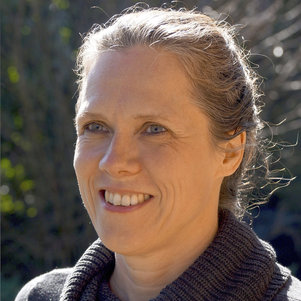Prof.dr.ing. C.M. Hein
Professor of History of Architecture and Urban Planning - Department of Architecture
It is impossible to understand the present without knowledge of the past. This also applies to architecture. Professor Carola Hein aims to increase students' understanding of history and train them to be critically-thinking architects.
“What distinguishes the architecture in China from that in the Netherlands? It is the cultural climate in which it develops, the genius loci”, says Hein. “That is something determined by history.”
Hein argues that modern-day discussions of such issues as Smart Cities or the urban planning of the future would be unthinkable without a thorough analysis of the history. Most of our cities have already been built and it is not possible to go back and start again. This is why the role of the Chair in History of Architecture and Urban Planning is primarily about exploring and charting long-term developments in the built environment. “I attempt to link ideas and developments from the past with the here and now. History does not stop ten years ago, as many historians appear to think – it is a continuum.”
Carola Hein developed her interest in architecture and architectural history at a very early age. She was born in Hamburg. The city was almost completely destroyed in World War II, but was still able to reconstruct most of its historic identity. One of the areas she has focused on in recent years is the way in which cities across the world deal with major shocks of this kind. She spent several years living and working in Japan, where, perhaps surprisingly, the reconstruction was in part inspired by German urban planning ‘cookbooks’ dating from the 1930s. She also conducted research in Brussels, where the large-scale demolition of the old in favour of the new – the European capital – erased much of its history. What were the underlying motivations? To answer that question, you need to conduct research locally and study the theory behind it. “It is also impossible to understand the tradition of Communist planning in Russia without investigating their textbooks and achievements in construction. If we aim to prepare architects to work internationally, we need to teach them about the way other countries deal with their history.” She believes that it is impossible ever to become a critical architect without that knowledge.
The underlying motives can also be explored by analysing the economic background. As professor at Bryn Mawr College (Pennsylvania), she followed the traces of raw materials, and in particular oil. She is continuing this research (“Global Architecture of Oil”) at TU Delft. An analysis of worldwide oil streams – from the site of exploitation right to the pump – reveals a picture of the architectural consequences. For example, it shows how Rotterdam and Antwerp underwent parallel developments in urban planning as a result of the installation of an oil pipeline between the two cities. Or how the appearance of cities and villages was transformed by the appearance of countless architecturally-identical petrol stations.
Only through the objective determination of facts can history serve as the basis for designing, emphasises Hein. She warns against the use of ‘instrumental’ history – cherry-picking facts from history that just happen to prove useful. History is far too multifaceted for that. “I always tell my students that there is no one single history. You should use a variety of textbooks and create your own narrative.”

Carola Hein
- +31 15 27 84192
- C.M.Hein@tudelft.nl
-
Room B8-01OOST700